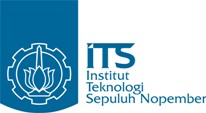Optimization of the Standalone Hybrid Energy Storage System in The All-Electric Seabus Power System Based on Pulsed Propulsion Load Prediction
Abstract
Keywords
Full Text:
PDFReferences
L. Chen and C. Rong-chang, “Current problems and risk analysis on high pollution risk operation of ship,” in 2019 5th International Conference on Transportation Information and Safety (ICTIS), IEEE, Jul. 2019, pp. 136–140. doi: 10.1109/ICTIS.2019.8883804.
Z. Li, Y. Xu, S. Fang, X. Zheng, and X. Feng, “Robust Coordination of a Hybrid AC/DC Multi-Energy Ship Microgrid With Flexible Voyage and Thermal Loads,” IEEE Trans Smart Grid, vol. 11, no. 4, pp. 2782–2793, Jul. 2020, doi: 10.1109/TSG.2020.2964831.
A. Y. Mirza, J. Dupont, and A. M. Bazzi, “Modeling, reconfiguration and loss modeling of multidrive propulsion system under inverter faults in allelectric ships,” in 2019 IEEE Electric Ship Technologies Symposium (ESTS), IEEE, Aug. 2019, pp. 201–209. doi: 10.1109/ESTS.2019.8847729.
Y. Yuan, J. Wang, X. Yan, B. Shen, and T. Long, “A review of multi-energy hybrid power system for ships,” Renewable and Sustainable Energy Reviews, vol. 132, p. 110081, Oct. 2020, doi: 10.1016/j.rser.2020.110081.
Lain, Brandon, and Kendrick, “Design Strategies for High Power vs. High Energy Lithium Ion Cells,” Batteries, vol. 5, no. 4, p. 64, Oct. 2019, doi: 10.3390/batteries5040064.
M. Pastorelli, S. Musumeci, and F. Mandrile, “Battery Sources and Power Converters Interface in Waterborne Transport Applications,” in 2021 AEIT International Conference on Electrical and Electronic Technologies for Automotive (AEIT AUTOMOTIVE), IEEE, Nov. 2021, pp. 1–5. doi: 10.23919/AEITAUTOMOTIVE52815.2021.9662776.
M. Akbarzadeh, J. De Smet, and J. Stuyts, “Battery Hybrid Energy Storage Systems for Full-Electric Marine Applications,” Processes, vol. 10, no. 11, p. 2418, Nov. 2022, doi: 10.3390/pr10112418.
M. Akbarzadeh, J. De Smet, and J. Stuyts, “Cost Assessment of Battery Hybrid Energy Storage System for Full-Electric Marine Applications,” in 2022 22nd International Scientific Conference on Electric Power Engineering (EPE), IEEE, Jun. 2022, pp. 1–6. doi: 10.1109/EPE54603.2022.9814114.
A. Boveri, F. Silvestro, M. Molinas, and E. Skjong, “Optimal Sizing of Energy Storage Systems for Shipboard Applications,” IEEE Transactions on Energy Conversion, vol. 34, no. 2, pp. 801–811, Jun. 2019, doi: 10.1109/TEC.2018.2882147.
C. Ju, P. Wang, L. Goel, and Y. Xu, “A Two-Layer Energy Management System for Microgrids With Hybrid Energy Storage Considering Degradation Costs,” IEEE Trans Smart Grid, vol. 9, no. 6, pp. 6047–6057, Nov. 2018, doi: 10.1109/TSG.2017.2703126.
K. Hein, Y. Xu, G. Wilson, and A. K. Gupta, “Coordinated Optimal Voyage Planning and Energy Management of All-Electric Ship With Hybrid Energy Storage System,” IEEE Transactions on Power Systems, vol. 36, no. 3, pp. 2355–2365, May 2021, doi: 10.1109/TPWRS.2020.3029331.
S. Zhou, Z. Chen, D. Huang, and T. Lin, “Model Prediction and Rule Based Energy Management Strategy for a Plug-in Hybrid Electric Vehicle With Hybrid Energy Storage System,” IEEE Trans Power Electron, vol. 36, no. 5, pp. 5926–5940, May 2021, doi: 10.1109/TPEL.2020.3028154.
Y. Andika, V. Lystianingrum, and F. A. Pamuji, “Energy Management System Using Cascade Fuzzy for Hybrid Battery and Supercapacitor in Electric Vehicles,” in 2021 International Conference on Green Energy, Computing and Sustainable Technology (GECOST), IEEE, 2021, pp. 1–6.
R. A. Saputra, V. Lystianingrum, and F. A. Pamuji, “Optimal Cut-off Frequency for Sizing Battery-Supercapacitor Hybrid Energy Storage System on Standalone Photovoltaic,” in 2024 IEEE 22nd Student Conference on Research and Development (SCOReD), IEEE, 2024, pp. 439–444.
Y. Wang, M. Zhang, K. Xu, and F. Wang, “Multi-objective Optimal Power Management for All-Electric Marine Power Systems,” in 2023 3rd Power System and Green Energy Conference (PSGEC), IEEE, Aug. 2023, pp. 747–751. doi: 10.1109/PSGEC58411.2023.10256012.
F. Balsamo, C. Capasso, D. Lauria, and O. Veneri, “Optimal design and energy management of hybrid storage systems for marine propulsion applications,” Appl Energy, vol. 278, p. 115629, Nov. 2020, doi: 10.1016/j.apenergy.2020.115629.
F. A. Raihan, “Flow Analysis of The Azipod System In The 11 Meters Patrol Vessel Using the CFD Method,” Sepuluh Nopember Institute of Technology, Surabaya, 2023.
N. F. Gusrifandaru, “Stability Analysis of The Battery Utilization Effect in the 11-Meters Patrol Boat,” Sepuluh Nopember Institute of Technology, Surabaya, 2023.
R. S. Abimanyu, “Analysis of Power Usage In the Application of Azipod System On An 11-Meter Patrol Boat,” Sepuluh Nopember Institute of Technology, Surabaya, 2023.
LS Materials, “LS Materials Supercapacitor Specifications,” 2024.
CDA CAP, “CDA LIC Specifications,” 2024.
V. S. Diaz, D. A. Cantane, A. Q. O. Santos, and O. H. Ando Junior, “Comparative Analysis of Degradation Assessment of Battery Energy Storage Systems in PV Smoothing Application,” Energies (Basel), vol. 14, no. 12, p. 3600, Jun. 2021, doi: 10.3390/en14123600.
MANLY BATTERIES, “MANLY Lightweight LiFePO4 Battery Specification,” 2025.
T. Nemeth, P. J. Kollmeyer, A. Emadi, and D. U. Sauer, “Optimized Operation of a Hybrid Energy Storage System with LTO Batteries for High Power Electrified Vehicles,” in 2019 IEEE Transportation Electrification Conference and Expo (ITEC), IEEE, Jun. 2019, pp. 1–6. doi: 10.1109/ITEC.2019.8790613.
M. K et al., “Energy Storage Technology and Cost Characterization Report,” Jul. 2019.
DOI: http://dx.doi.org/10.12962%2Fj25481479.v10i2.22748
Refbacks
- There are currently no refbacks.
 |  |  |  |
| |  |  |
|
|
|
|
|
P-ISSN: 2541-5972
E-ISSN: 2548-1479
IJMEIR journal published by Department of Marine Engineering, Faculty of Marine Technology, Institut Teknologi Sepuluh Nopember Surabaya Indonesia under licenced Creative Commons Attribution-ShareAlike 4.0 International Licence. Based on https://iptek.its.ac.id/index.php/ijmeir/


1.png)
